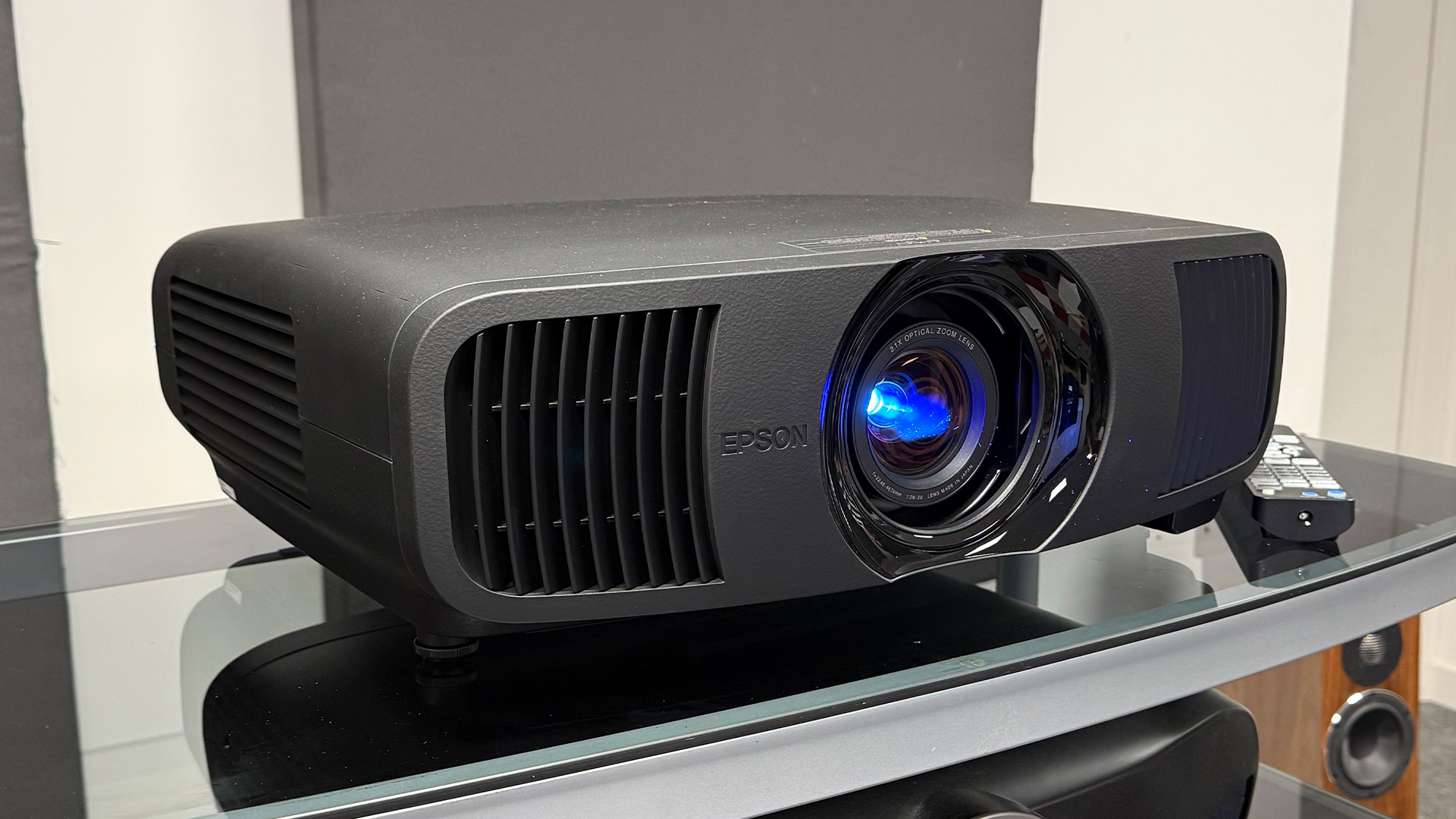What Hi-Fi? Verdict
The U8Q is a strong all-round performer, though one or two rivals make it look a bit expensive
Pros
- +
Spectacular brightness and colour
- +
Impressive black levels and contrast
- +
Meaty audio
Cons
- -
Various backlight distractions
- -
Slightly inconsistent feel to pictures
- -
Feels a bit expensive
Why you can trust What Hi-Fi?
Hisense’s mission to prove that it’s now officially a serious player at the premium end of the TV market is really hitting its stride.
No sooner have we had our retinas blown off by the dazzling colour, contrast and brightness of the brand’s debut RGB Mini LED TV, the mammoth 116-inch 116UX, than we find our test benches sagging under the weight of the aggressively eye-catching talents of the 65-inch U8Q.
As well as being built like a tank, this representative of the most premium series from Hisense’s regular (as in, not RGB Mini LED or projector-based) TV range packs all kinds of serious and cutting-edge features and specifications.
But do all of its on-paper glories translate into the sort of performance heroics we now expect to see from a flagship-level Mini LED TV?
Price
Once upon a time, not so long ago, £1699 / AU$2999 for a premium, feature-rich 65-inch Mini LED TV would have looked like a bargain. The past couple of years have seen premium TV prices plummet so fast, though, that the 65U8QTUK actually looks quite expensive.
TCL’s latest flagship 65-inch TV, the 65C8K, for instance, is currently available for just £1199 / AU$1750, and two excellent OLED options, Panasonic’s Z90B and Philips’ OLED760 (review coming soon), are also available for similar or less than the Hisense.
As we’re about to discover, though, the U8Q really does boast some seriously impressive specifications – and crucially gets more effective all-round use out of those specs than any ‘mainstream’ Hisense TV we’ve seen before.
The latest hi-fi, home cinema and tech news, reviews, buying advice and deals, direct to your inbox.
One note on model numbers before we proceed, though: while there is a U8Q model available in the US (it’s often called the ‘U8QG’), we understand that this is fundamentally different to the UK U8Q we’re reviewing. We’re told that the Australian version is, however, the same as ours.
Design
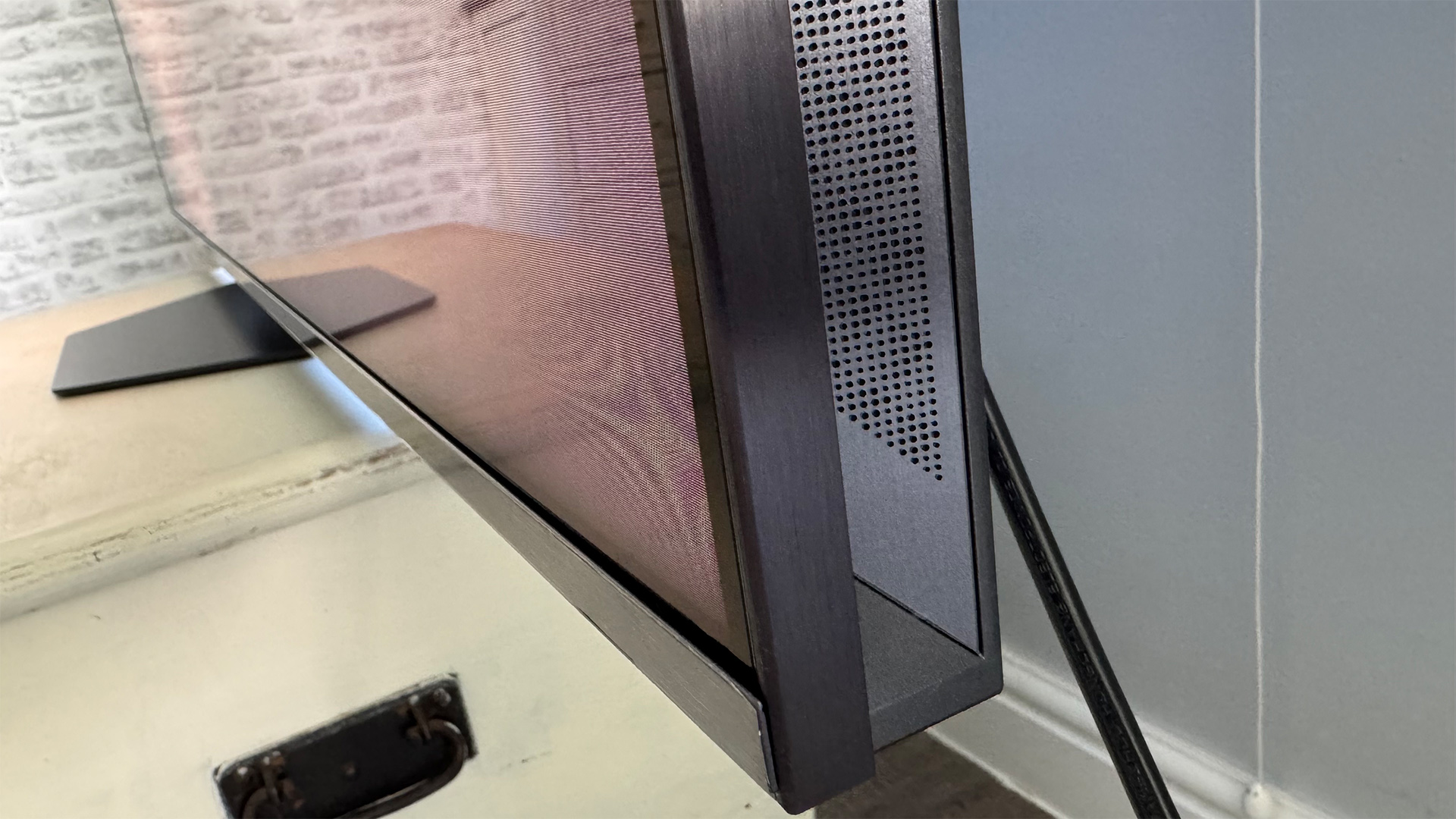
Setting the Hisense U8Q up proves quite the workout. While the bezel around its screen is fairly on-trend slim, it’s pretty chunky around the back by modern standards.
This isn’t ‘empty’ depth, either; this is a seriously heavy beast even before you attach its robust metal footplate-style desktop support.
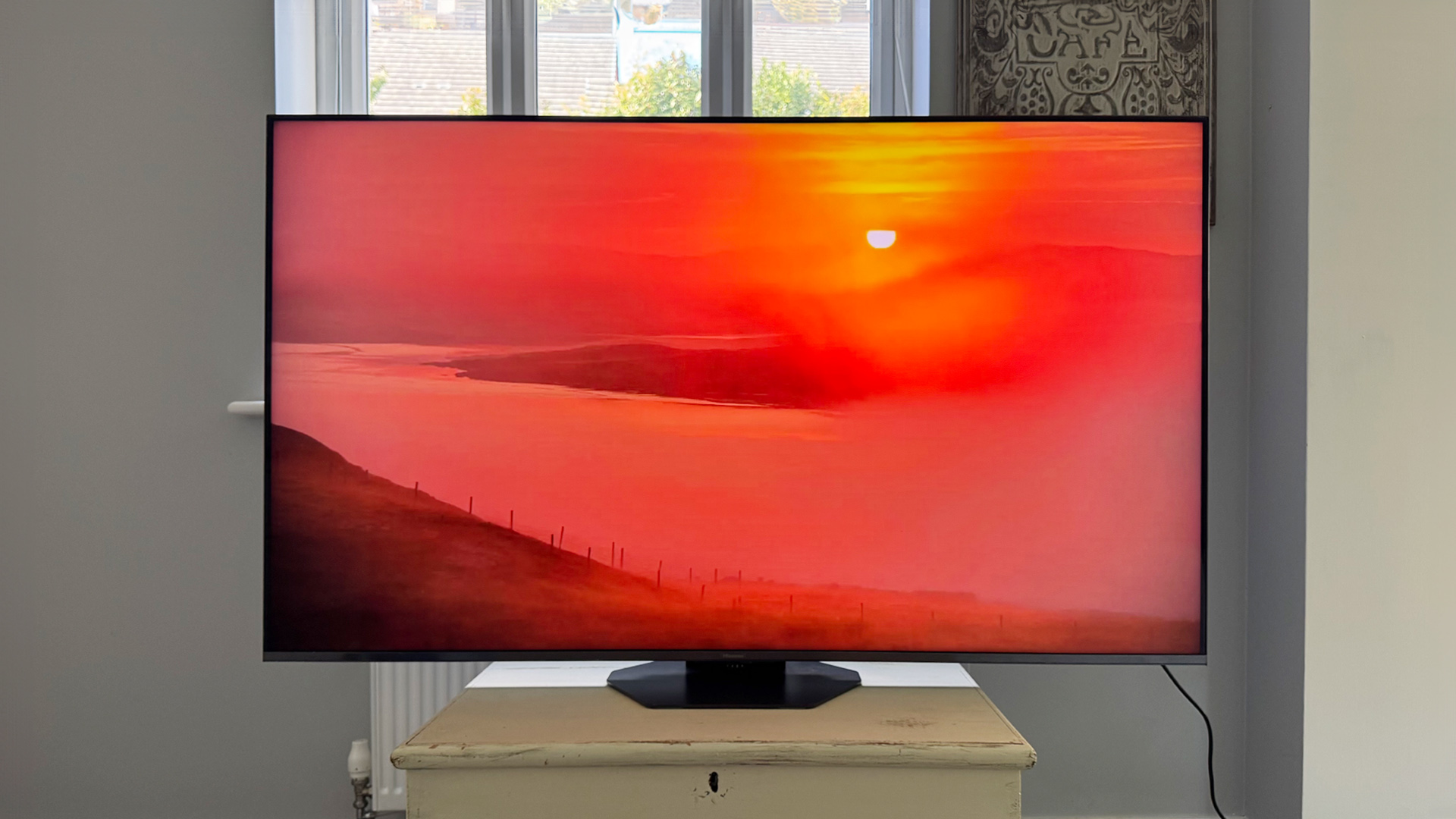
Screen size 65 inches (also available in 55, 75, 85, and 100 inches)
Type Quantum Dot LCD
Backlight Mini LED (2048 dimming zones)
Resolution 4K
HDR formats HLG, HDR10, HDR10+, Dolby Vision
Operating system VIDAA
HDMI inputs x 3 (all 48Gbps HDMI 2.1)
Gaming features 4K/165Hz, 4K/120Hz, VRR, ALLM, Dolby Vision game mode
Input lag 13.7ms at 60Hz
ARC/eARC eARC
Optical output? Yes
Dimensions (hwd, without stand) 84 x 145 x 4.5cm
The set’s weight hints at some premium innards as well as uncompromising build quality – a hint backed up by the appearance of metal-covered speaker outlets in the TV’s extended side panels.
As well as being compact enough to let you place the 65-inch U8Q on even quite slender pieces of furniture, the desktop ‘foot’ lets you adjust the TV’s height, potentially opening up enough of a gap to install a soundbar.
We wouldn’t necessarily call the U8Q beautiful in the typical shallow sense of the word, but if your tastes lean towards products that look like they’re literally bulging at the seams with cutting-edge tech goodness, then this Hisense is bang on the money.
The U8Q continues this design theme into its remote control. This is unusually big by modern handset standards, but it wears its size well thanks to a gentle brushed metallic black finish offset at its heart by a gleaming silver circle of menu navigation buttons.
It also scores over most rival TV handsets by featuring a large solar panel at the bottom of its front edge.
Features
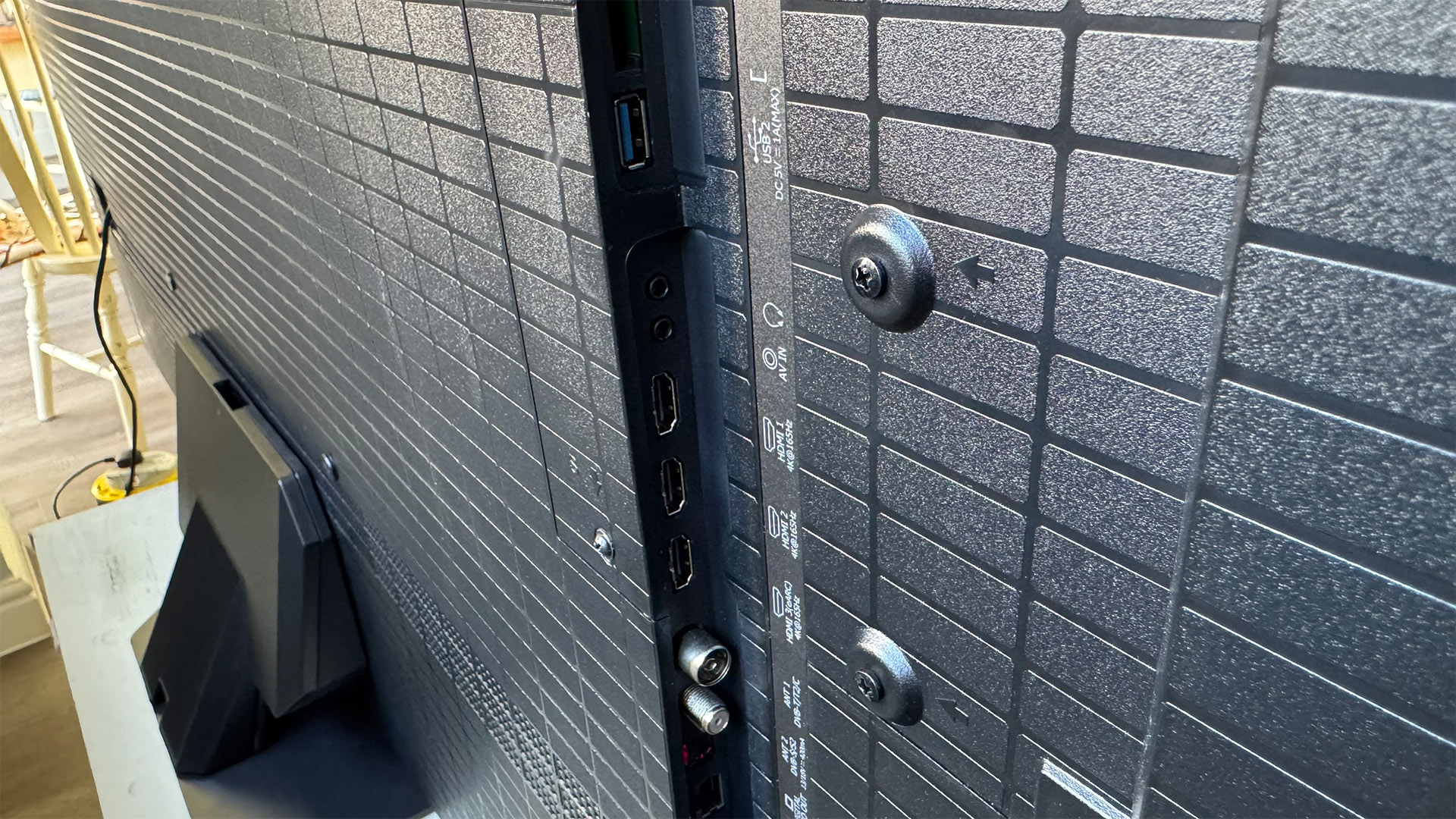
The U8Q kicks things off here in spectacular fashion by featuring a VA-type LCD panel illuminated by Mini LEDs capable of pumping out, it’s claimed, up to 5000 nits of brightness.
To make sure all this light goes more or less where it’s supposed to, Hisense has fitted the TV with 2048 separate local dimming zones; a huge number that potentially immediately goes a long way towards explaining the large price gap between the U8Q and TCL’s 1688-zone C8K.
What a TV does with its dimming zones can actually be more important than the number of them it has, but having as many zones as the U8Q has to at least class as a promising foundation.
We should add, though, that some screen sizes in the U8Q range apparently use IPS panel types rather than VA ones, so we can’t say for sure that our experiences with the 65-inch model will apply to other screen sizes in the range. An IPS panel will usually, for instance, deliver less impressive contrast than a VA one.
Control of all the U8Q’s local dimming zones is delivered by a new Hi-View AI Engine Pro processor that Hisense claims sports a 1.6x faster CPU, 2.2x faster GPU and 1.5x faster NPU than the processor used on last year’s equivalent U8N TVs.
As you might expect with so much power at its disposal, the Hi-View processor extends to the TV’s audio, content recognition and power-saving features, as well as across all aspects of picture performance.
The U8Q’s colours are delivered using Quantum Dot technology to support both finer tonal definition and a wider range of tones capable of retaining saturations at the sort of extremely high brightness levels the TV can support, while gamers will be pleased to hear that refresh rates are supported up to 165Hz using Hisense’s Game Mode Ultra technology.
The set also supports VRR right up to that 165Hz maximum figure, including in the AMD FreeSync Premium Pro format. And, in its Game mode, the TV takes a respectably speedy 13.7ms to render incoming 60Hz graphics. This drops to just under 7ms with 4K/120Hz feeds, too.
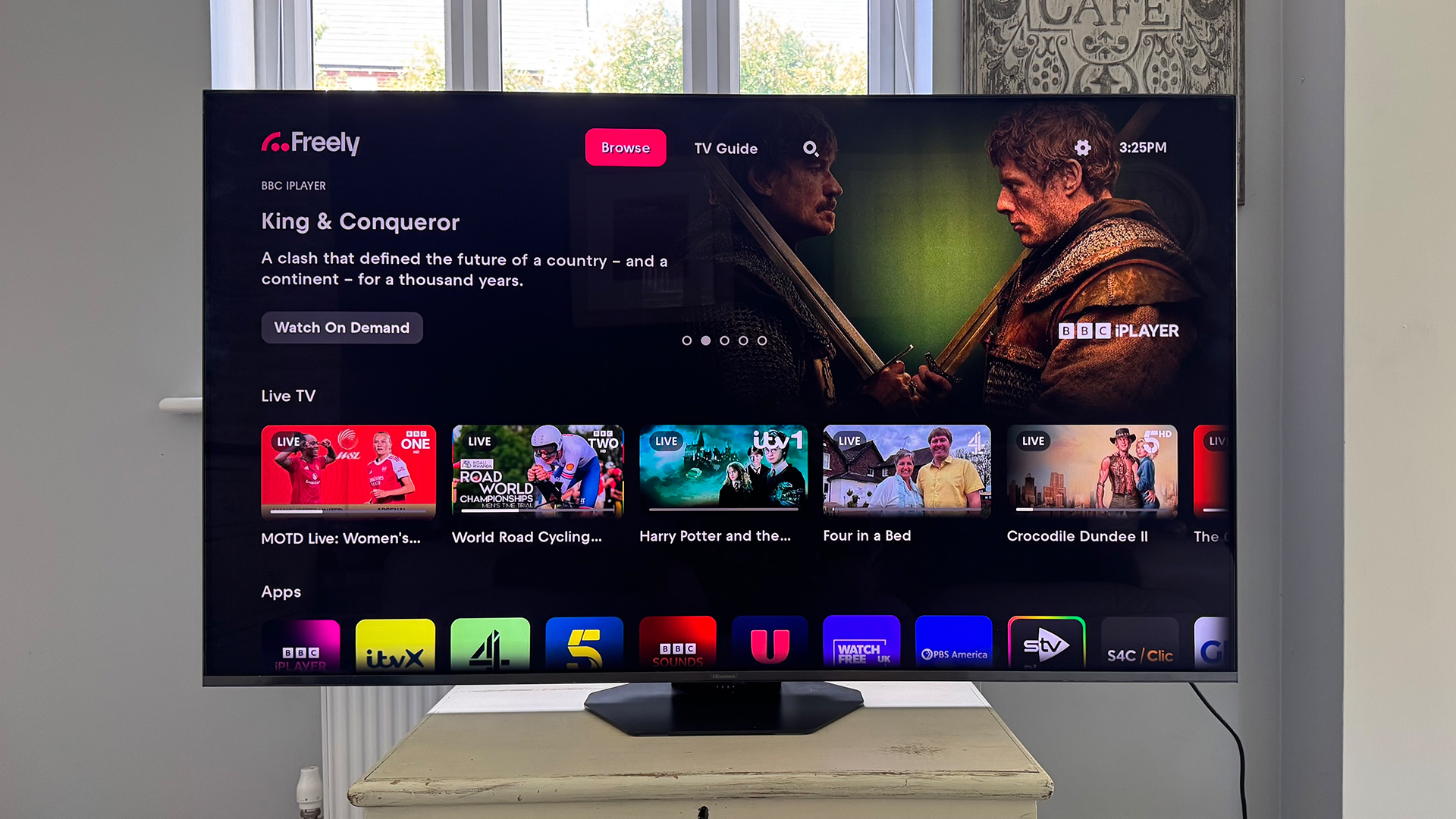
You can also call up a dedicated gaming menu when a game source is detected, from which you can select such gaming aids as genre-themed image presets, different aspect ratios, a virtual Aim Point, and the option to enlarge a game’s mini-map.
As we now expect of almost any TV, too, the U8Q’s HDMI ports support ALLM switching, so that the TV will automatically switch into its low-latency Game preset when a game source is detected.
The U8Q scores further gaming points over many of its premium rivals by having all of its HDMIs (rather than just a couple) support the full range of gaming features enabled by the HDMI 2.1 specification. Less great, though, is the fact that there are only three HDMIs, when pretty much every other premium TV these days has four.
Hisense has an interesting excuse/reason for only providing three HDMI ports: it also has a Display Port (cunningly disguised as a USB-C port) tucked into the TV’s side.
While DP connections are fairly common in the PC/monitor world, they’re extremely rare on TVs. We can't help but reflect that we’d personally have preferred Hisense to have stuck with four HDMIs on the U8Q.
Other connections of note include a couple of USB ports (one 2.0, one 3.0), an optical digital audio output and a physical headphone output. Plus, the now inevitable wi-fi and Bluetooth wireless options.
The U8Q is capable of playing back all the HDR formats found in the mainstream picture content world, including both the Dolby Vision and HDR10+ premium HDR variations, with their extra scene-by-scene picture information.
An AI-backed ambient light sensor unlocks the IQ and Adaptive versions of Dolby Vision and HDR10+ too, meaning that they adapt their output to suit your room conditions so that you always get a consistent HDR experience.
The U8Q further underlines its premium position by achieving IMAX Enhanced accreditation. In other words, IMAX considers it capable of unlocking the full benefits of the IMAX Enhanced mastering system available on some Disney+ content and a few 4K Blu-rays.
Plus, there’s a Filmmaker Mode designed to present pictures based on the industry-adopted video standards used in most professional mastering studios.
In the UK and Australia, the U8Q’s smart features are provided by Hisense’s own VIDAA system (whereas the closest US equivalent, the U8QG, gets Google TV).
VIDAA still looks a touch basic compared with some rival platforms, but it’s actually really easy to use, including via voice control, and these days carries all of the key streaming apps most people will need. This includes Freely, which lets you livestream the majority of channels on the Freeview broadcast platform, rather than having to rely on an aerial.
Hisense hasn’t focused its premium thinking exclusively on the U8Q’s picture quality. It also features a sound system that delivers a claimed 70W of total audio power across a 4.1.2-channel suite of drivers. This includes speakers built into the TV’s sides, two up-firing drivers, and a promisingly large dedicated subwoofer built into its rear.
If you add a Hisense soundbar, meanwhile, you can also unlock the brand’s Hi-Concerto system, where the speakers in the TV and those in the soundbar work in tandem.
Picture
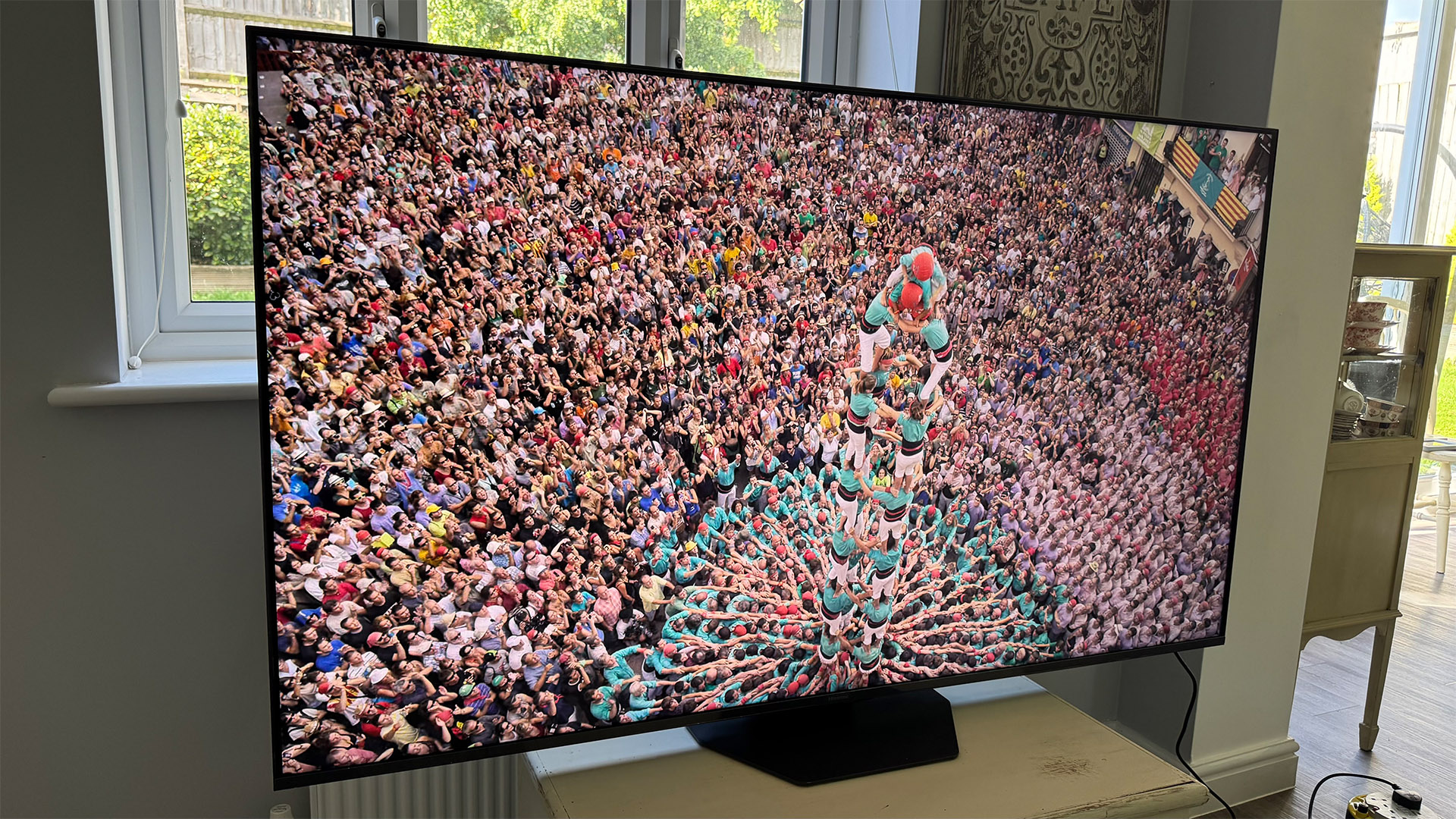
The U8Q shows a substantial improvement in multiple key picture areas over its predecessors, resulting in some genuine 'wow' moments. It isn’t quite consistent enough, though, to obliterate all of its competition.
The good news hits you first, though.
For starters, you’re instantly aware of how dazzlingly bright this screen is. It hits brightness peaks with small HDR highlights that are up there with the most intense we’ve ever seen. And, amazingly, it manages to retain the intensity of those peaks almost unchecked, even if they appear against a very dark backdrop, without that dark backdrop typically becoming greyed over or blighted by obvious backlight blooms or halos.
This gives us an immediate sight of just how advanced the U8Q’s backlight controls are. The extra dimming zones Hisense has introduced for its U8 series this year, together with what seem to be major improvements in the processing Hisense is using to drive those dimming zones, combine to deliver outstanding contrast and dynamism.
Surprisingly, the brightness isn’t as extreme in the U8Q’s Standard picture mode as it is on TCL’s C8K rival. But Hisense’s set pushes for deeper, richer black levels – especially with images that contain a particularly stark mix of very bright and very dark areas.
In fact, it produces a depth and neutrality with its black tones that suddenly makes us aware of a degree of greyness in the C8K’s darkest moments that we’d not felt aware of before.
All, to repeat this point, without causing the sort of backlight distractions or histrionics that might usually accompany such light extremes – including not having to dim down small bright highlights to suppress blooming.
The U8Q’s Standard mode colours sometimes extend beyond the saturation levels of the C8K too, joining with the rich contrast in producing images of rare intensity and vividness.
Even the heaviest saturations still contain plenty of subtle shading, though, helping images look three-dimensional, sharp and textured at all times.
The sharpness holds up really well when there’s motion in the frame, too, even with 24p film sources, thanks to excellent suppression of both smearing and judder without needing to introduce a level of motion processing that might induce excessive smoothing (AKA the soap opera effect).
While the U8Q can look class-leadingly good in Standard mode with very dark scenes, though, at least at first glance, if you look hard or long enough, a few issues start to present themselves.
First, dark scenes can lose subtle shading details in their darkest corners, leaving them looking empty and hollow – like dark holes in the picture rather than fully integrated parts of it.
The U8Q’s push for extreme contrast in Standard mode can also cause a little silhouetting with HDR sources, where objects against bright backdrops look so dark by comparison that they become mere shadows.
You can improve these problems via a handy Dark Detail feature, but it isn’t a perfect fix, especially as it doesn’t really do anything to stop colours from desaturating when they don’t have much brightness to feed off.
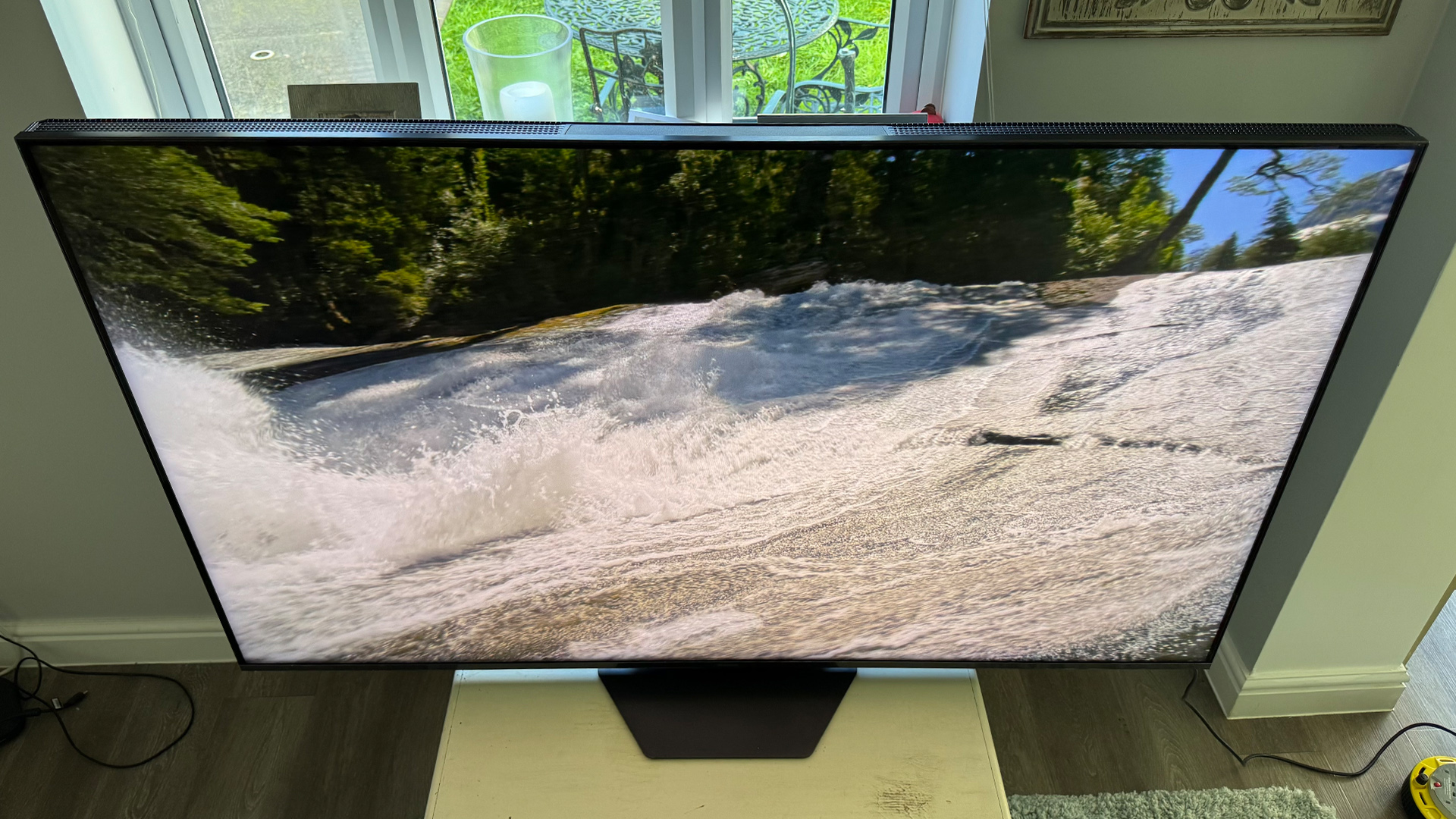
The Standard mode also very occasionally sees low-lit objects suddenly and distractingly take on slightly more light mid-shot as the local dimming system belatedly realises there’s an object there and decides to pump a bit more brightness into it.
The U8Q’s colours in Standard mode are slightly inconsistent, too. In one part of a particular shot or during a particular scene, colours might look excellent – even richer and more satisfying, in fact, than those of TCL’s 65C8K. But in another scene or even another part of the same shot, colours can look a bit off-key. This is especially true with skin tones, which can appear a little green around the gills and plasticky.
The Dynamic Tone Mapping Hisense applies to its Standard mode to try and optimise HDR to the panel’s capabilities can be a little over-enthusiastic, too. So while we generally applaud the light and dark extremes the screen goes for, occasionally a bright highlight will clip (lose subtle detail) quite noticeably, or you’ll see a sudden jump or drop in the image’s overall brightness in the middle of a shot containing what should be only subtle brightness variations. If you turn the Dynamic Tone Mapping off, though, the image feels a bit too flat for a Standard mode.
The U8Q’s Filmmaker Mode also feels a bit off, unfortunately. The adjustments this mode makes to the TV’s settings in pursuit of more accurate pictures find those fantastically inky and rich black tones on show in the Standard mode taking a pretty substantial hit, leaving dark scenes suddenly looking noticeably grey.
The Filmmaker Mode images are much dimmer than those of the Standard mode, too – more so, it seems to us, than they really needed to be.
Filmmaker Mode colours look a bit strange at times, as an apparent attempt to make the general colour tone warmer actually introduces an unwanted reddish pink tone to proceedings, and the greyness now apparent with some dark scenes causes relatively faint tones to look a little flat and blue.
It’s a tribute to how much the U8Q gets right, though, that despite its inconsistencies, it still classes as a strong picture performer overall – at least in its Standard mode.
Sound
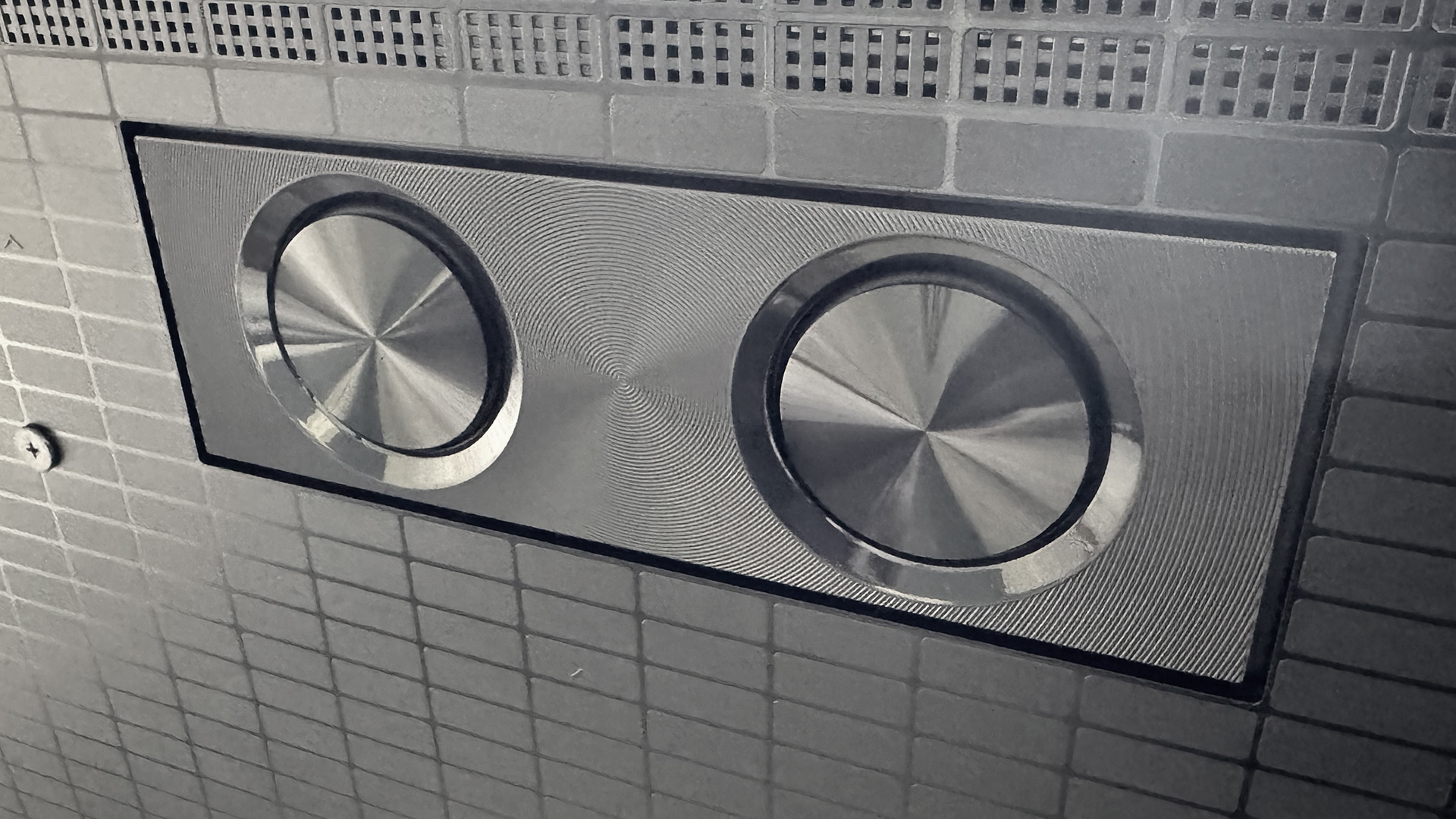
The U8Q’s sound system makes a strong first impression.
It can get loud enough to keep the TV’s big and impactful Standard mode pictures suitably cinematic company, while having enough power in reserve to also propel sound effects far enough away from the TV to create a large and immersive soundstage that doesn’t sound forced or ‘gappy’.
In fact, most effects are placed quite crisply and accurately around the soundstage.
The U8Q rounds its sound out with a solid amount of bass courtesy of that large subwoofer on its rear, which joins some respectable headroom at the treble end of the spectrum in allowing Hisense’s TV to handle dense soundtrack moments with real force and power, as well as building up to suitably raucous crescendos with big action or horror scenes. The TCL C8K sounds rather lightweight and polite by comparison.
There is, though, a lack of discipline to the U8Q’s sound. That heavy bass can sometimes go too far with sustained bass sounds, succumbing to distortion, buzzing and dropouts when the going gets really tough, as well as sounding a bit coarse compared with other elements of the soundstage.
The bass is also a bit lethargic, meaning it struggles to respond to deep percussive beats with any real rhythm or clarity.
Some ambient effects, such as wind in the trees or people breathing heavily, can sound a little too prominent in the mix. And, finally in the negative column, while dialogue sounds clean and clear, it can tend to appear a bit stuck in the middle of the screen.
While the U8Q will of course be easily beaten for audio by a soundbar, it’s still a pretty strong sound performer by TV standards. Just one that could do with knowing its own limitations a bit better.
Verdict
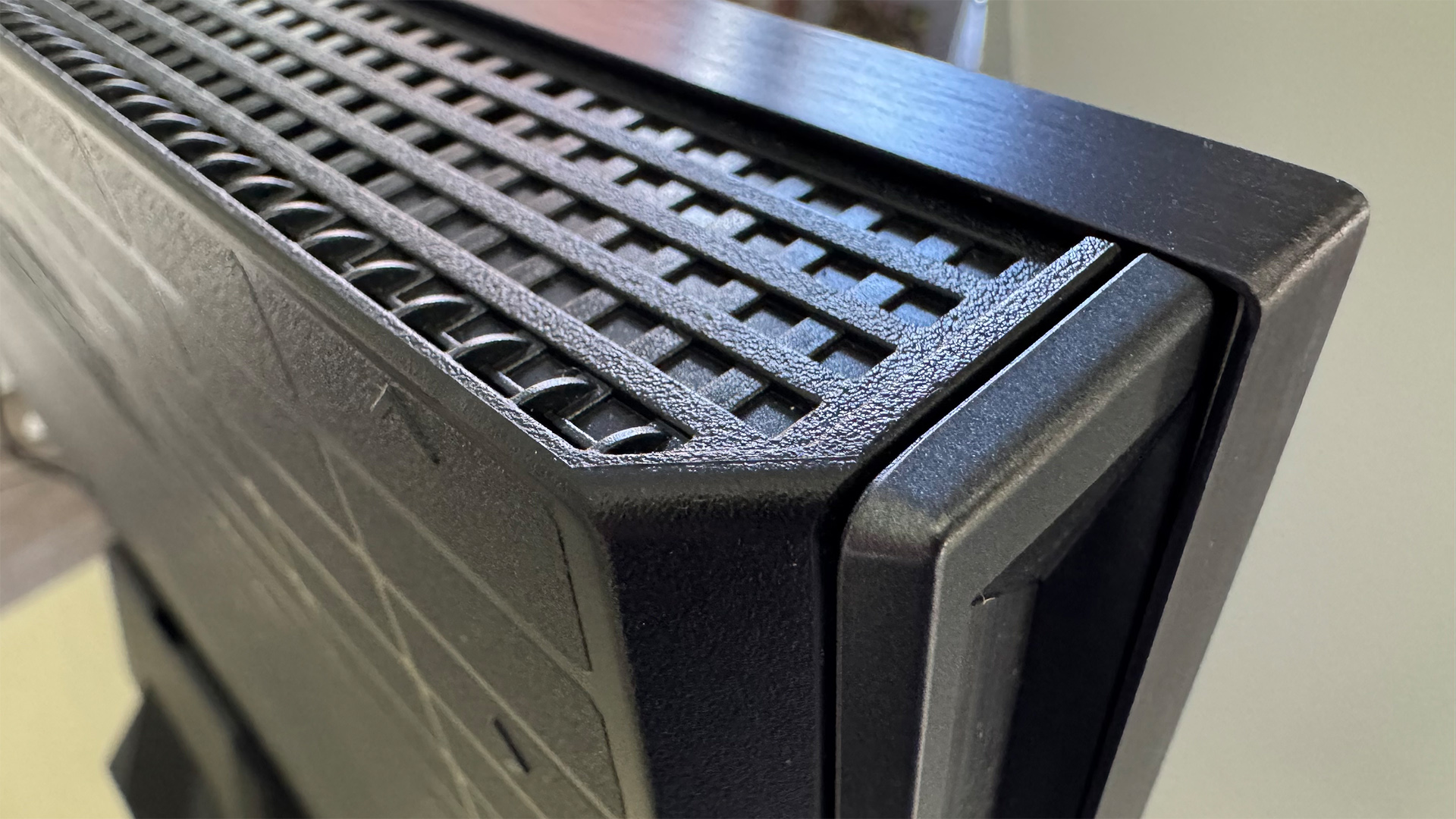
There are times with the Hisense U8Q where we feel we are watching easily one of the best TVs of the year.
In its Standard mode with punchy HDR content, its combination of brightness, contrast and extreme backlight control feels truly cutting edge and is glorious to behold.
It’s just a bit too inconsistent and expensive, though, to secure that elusive fifth star.
SCORES
- Picture 4
- Sound 4
- Features 4
MORE:
Read our review of the TCL C8K
Also consider the Amazon Fire TV Omni Mini LED
Read our Samsung S90F review
Best TVs: flagship OLEDs and budget LED sets tried and tested
John Archer has written about TVs, projectors and other AV gear for, terrifyingly, nearly 30 years. Having started out with a brief but fun stint at Amiga Action magazine and then another brief, rather less fun stint working for Hansard in the Houses Of Parliament, he finally got into writing about AV kit properly at What Video and Home Cinema Choice magazines, eventually becoming Deputy Editor at the latter, before going freelance. As a freelancer John has covered AV technology for just about every tech magazine and website going, including Forbes, T3, TechRadar and Trusted Reviews. When not testing AV gear, John can usually be found gaming far more than is healthy for a middle-aged man, or at the gym trying and failing to make up for the amount of time he spends staring at screens.
You must confirm your public display name before commenting
Please logout and then login again, you will then be prompted to enter your display name.
